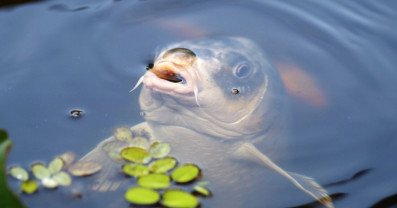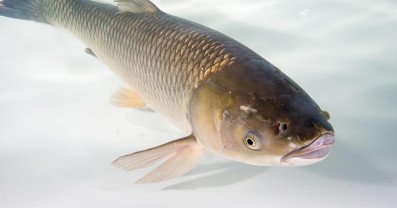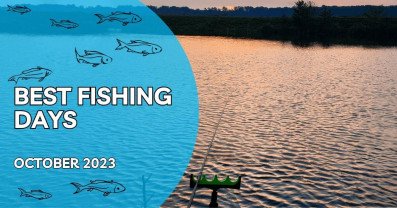Surface Carp Fishing: A Comprehensive Guide to Catching Top-Water Carp
Surface Carp Fishing: A Comprehensive Guide to Catching Top-Water Carp
Surface fishing for carp is a truly captivating method, offering a unique opportunity to witness the take firsthand. This guide will detail everything you need to know to successfully target carp off the top, from understanding why this method is so special to selecting the right tackle and bait.
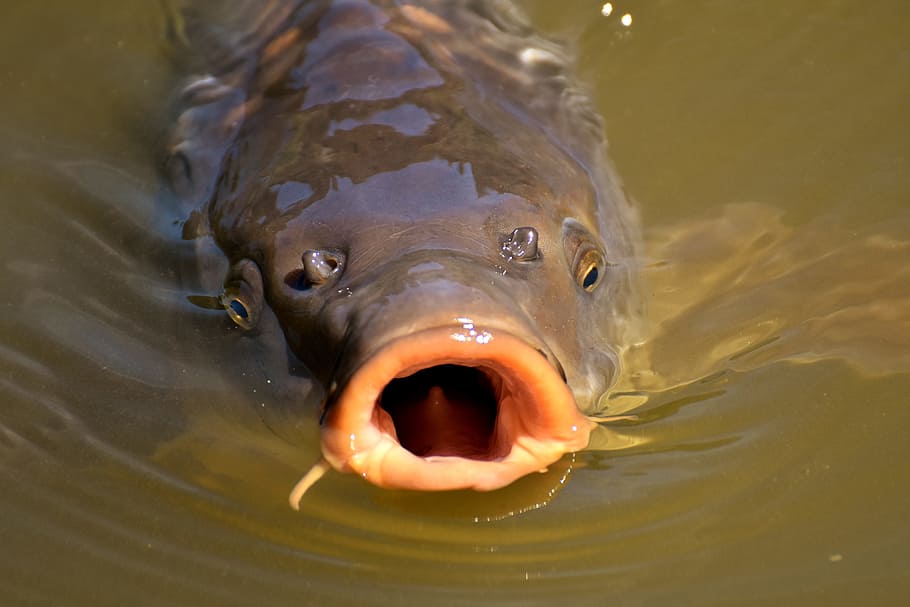
Why Choose Surface Fishing?
The primary draw of surface fishing is the visual element. Unlike most other carp fishing methods, you can watch the entire process unfold. This allows for a more selective approach, enabling anglers to target larger fish or specific individuals within a shoal. If you encounter a lake with a lot of smaller carp, you can actually use your float to select the fish that you want to target.
Optimal Times for Surface Fishing
While carp can be caught off the surface at any time of year in heavily stocked lakes, the most productive periods tend to be during the warmer months:
- Spring: As temperatures begin to rise, particularly on those 15-20°C days, carp will start gravitating towards the warmer surface waters.
- Pre-Spawn: Early June, before the spawning period, can be exceptionally productive.
- Late Summer/Autumn: Surface fishing can become more challenging as the season progresses, especially on pressured waters where carp become wise to angling tactics.
Locating Carp on the Surface
Effective surface fishing begins with locating the fish. Polarising sunglasses are indispensable for reducing surface glare, allowing you to see carp cruising beneath the surface, often in shallower areas or near weed beds. In these areas the fish are often sitting on the top of the weed.
Key signs to look for include:
- Carp looking upwards, often in anticipation of food.
- Fish feeding on natural sources such as willow seeds or hatching insects.
Baiting Strategies for Surface Fishing
While a simple free-lining setup with bread can sometimes produce immediate results, a more strategic approach is often necessary for consistent success. Pre-baiting before casting will create competition between the carp. This often makes them more aggressive and they often become easier to catch.
Effective baiting tips include:
- Catapulting or Spodding: Use a catapult, spod, or throwing stick to introduce bait and get fish feeding.
- Bait Choice: Chum mixers (dog biscuits) are highly effective, cheap and easily available. Adding small floating pellets into the mix can also be beneficial.
Effective Baiting Techniques
When introducing bait, consider the wind direction. If there is not much wind it is important to introduce bait in a way that it is not falling directly onto the fish. Use any wind to your advantage.
- Cross Winds: Introduce bait to the side and let it drift towards the fish.
- Wind at your Back: Throw the bait close in and let the wind drift it out to the fish.
- Head Winds: Use a spom rod to throw the bait upwind so that it drifts into your fishing zone.
Avoid surface fishing when there are gales. On these days, the choppiness of the water makes it very difficult to fish on the surface. A good tip is to add oil to your dog biscuits. This flattens the surface of the water and stops the ripples from occurring. Not only does this make the surface clearer to view but also makes it easier to spot the take.
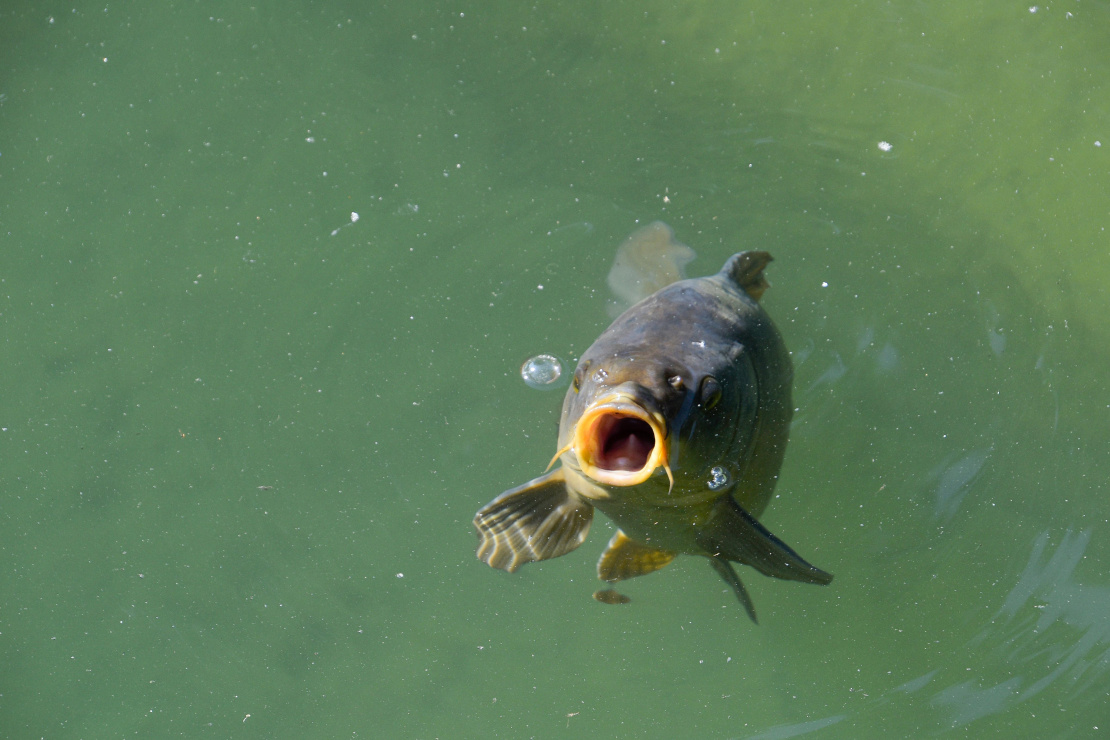
Surface Fishing Rigs
For surface fishing, simplicity is key. Free-lining with bread works well at short ranges, but for longer casts you will require the use of a float. For a simple free-lining set up use:
- 8-10lb main line.
- A size 6 hook
To connect the bread to the hook, just hook a piece of crust onto it, or mould the white part around the hook. If the carp are further out in the lake, a float is necessary. These will assist with casting and hooking. They provide resistance when a fish takes the bait, aiding in self-hooking and enabling fishing at long range.
Tying a Surface Fishing Rig (Step-by-Step)
To tie a surface fishing rig you will need the following:
- Interceptor controller float.
- Dedicated floater line (clear, neutral buoyancy monofilament).
- 12lb for mainline and 8-10lb for hook link.
- A size 12 mixer hook.
- Brown coloured pop-ups.
- Boilie stops.
- Scissors and a baiting needle.
- Prepare the Hook Link: Cut a length of 10lb cruiser control line, the length will depend on whether you are fishing in clear or murky water. Tie a small overhand knot to mount the hookbait onto.
- Mount the Hookbait: Thread the pop-up onto the baiting needle then slide it down onto the loop. Place the boilie stop and pull it down.
- Attach the Hook: Thread the hook through the eye towards the point, set your hair length, wrap the line around the shank seven times, pass the line back through the eye and tighten.
- Attach the Swivel: Tie the swivel, which is included with the controller float, to the hook link. Use a blood knot or uni knot.
- Prepare the Float: Pull out the inserts then thread the main line though the float and inserts.
- Attach to the Mainline: Tie a figure of eight loop in the mainline and pass it over the quick chain swivel included with the float. Pull the insert back and the swivel will locate neatly into place. This soft insert grips the swivel to create a safe bolt rig.
Maintaining Line Buoyancy
Even when using buoyant monofilament lines, over time they tend to sink. To prevent this from occurring apply vaseline up and down the line.
- Apply Vaseline or Petroleum Jelly: Use a small amount of petroleum jelly, spread it up and down the mainline to ensure the line stays on the surface. The oil creates a film that stops the water from rippling.
Tackle for Surface Fishing
The recommended tackle for surface fishing:
- Rod: A 12ft 1.75lb test curve rod is suitable. Softer tips help to reduce hook pulls especially when using small hooks.
- Reel: A lightweight reel such as a Daiwa 1600 Tournament is ideal. You don't need a large reel or lots of line for surface fishing.
- Line: Use 10lb cruiser control line.
Hookbait Preparation
Trim down your pop ups so that they sit low in the surface film. This will make it easier for the carp to take the bait and improve hook holds. Trimming down your pop up reduces the buoyancy of it, helping it to sink into the water and sit lower on the surface film.
Casting and Bait Presentation
When casting out, try to cast past the area where the fish are feeding to avoid scaring them. Once the float hits the surface slowly reel it back into the feeding zone. Don’t reel it too far, just tease it into the area where you want to fish.
Playing and Landing Carp on the Surface
When playing carp on light tackle it is important to be gentle, playing the fish slowly and carefully. The best part of surface fishing is watching the take and catching the fish.
Conclusion
Surface carp fishing is a highly rewarding method. It is a relatively simple method to learn and can be incredibly effective. By following the techniques in this guide, you'll be well-equipped to get out there and start catching carp off the top.

